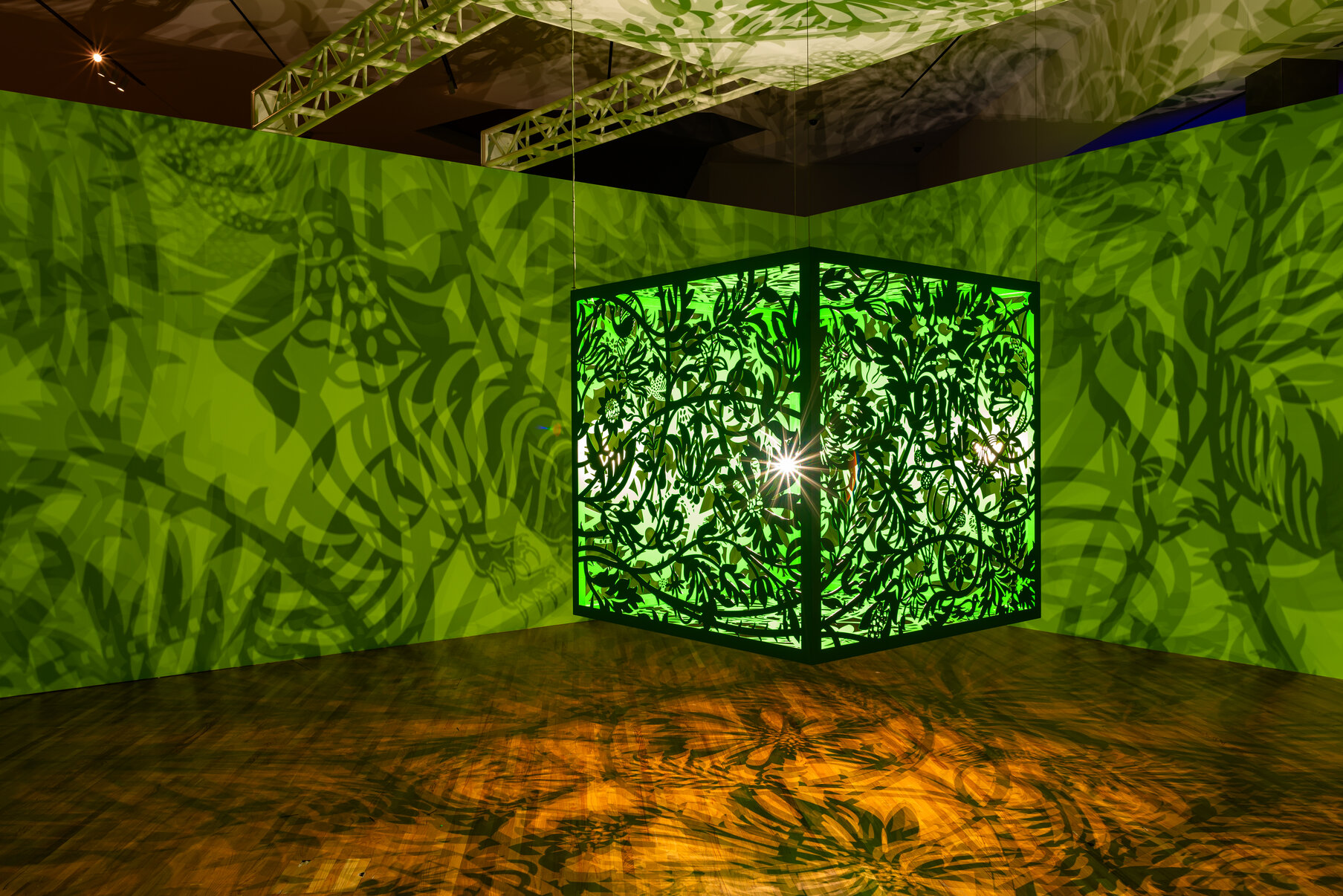by: Thalia Vrachopoulos
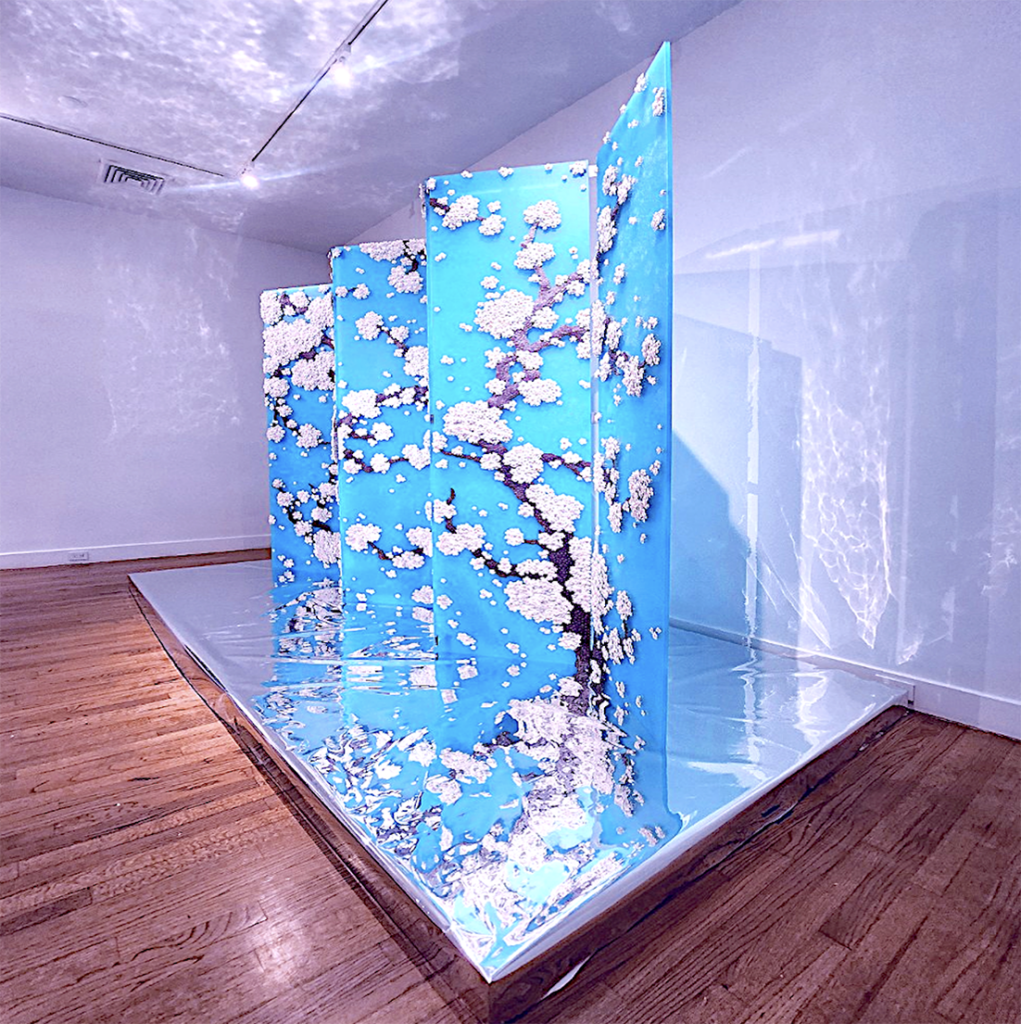
Ran Hwang’s latest exhibition at the uptown Leila Heller Gallery re-introduces an abundance of transient forms and the eternal ephemeral. Hwang’s oeuvre – many of her artworks are located in such prestigious collections as, the Brooklyn Museum, the Houston Museum of Fine Arts and Seoul’s National Museum of Contemporary Art– is inspired by her ever-changing life between the US and Korea, as well as her life-long practise of Seon Buddhism. Hwang’s two-dimensional sculptural pieces are embedded with a delicate sense of ethereal melancholy as if mourning for the end of a life lived and for the pain imbuing the one to come.
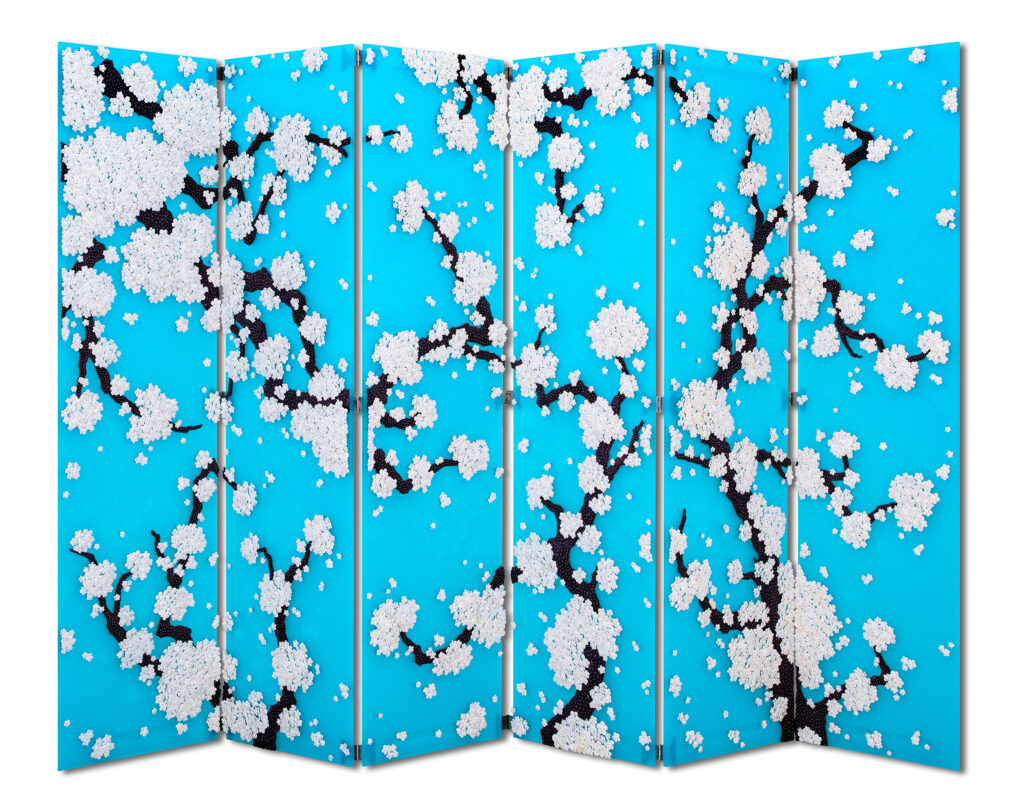
Hwang’s new artworks created site-specifically for the Evanescence and Regeneration exhibition at Leila Heller Gallery– represent yet another step into an abstract vocabulary in radiant images of impermanent evanescent blooming forms. As seen in her series titled Becoming Again, in which branches of yellowish, rose and white plum blossoms flourish in snake-like constellations against a deep-blue sky, tangled together with cobweb-like boughs – all recurring symbols for the incessant ephemeral and fragility of life and nature – Hwang, carefully perfects with eloquent mastery, the unique embodiment of her well-known iconography into a static background of transparent Plexiglas.
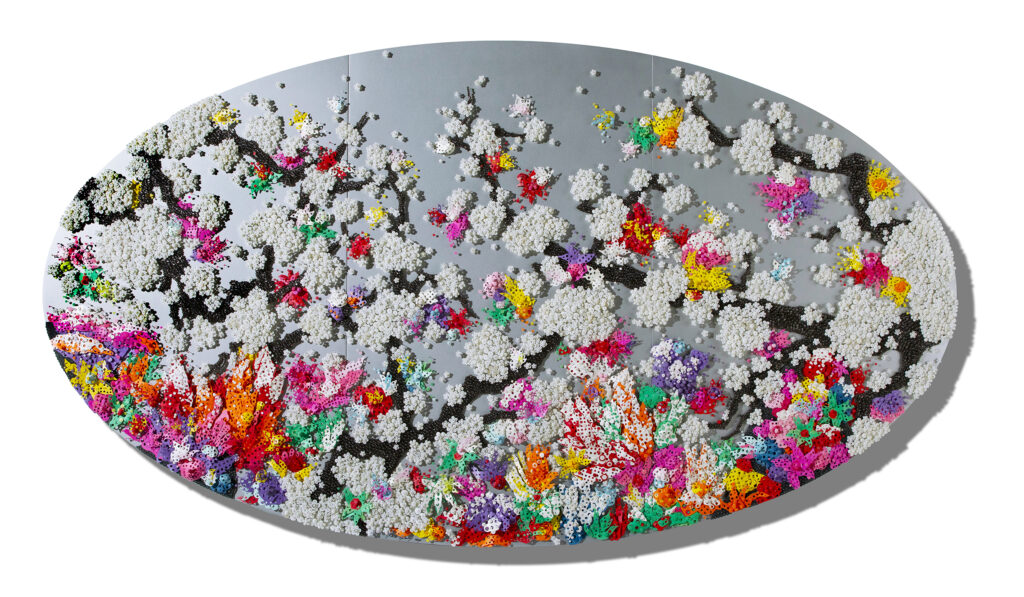
buttons, Hanji paper, beads, pins on wooden panels, 78.7 x 141.7 inches
Similarly, in her maximalist work titled Healing Oblivious Aqua_OS, Hwang reformulates the silver-coloured wooden panel – in which her overflowing floret clusters, organically spring – into an immense two-dimensional ellipsoid shape, symbolizing the imminent transitory of natural forms. At the same time through her expression, she comments on the constant eternal cosmic regeneration of the Earth’s biosphere, despite the fleeting nature of phenomenal life. Her delicate blossoms with their colorful petals, appear to flow into a liquid phantasmagoria of becoming. Hwang’s Hanji paper and button-made florets appear to effortlessly meander through the dark branches into blooming bracelets of iridescent stars against the silver firmament.
But Hwang’s artistic ingenuity stands out in her two small tondos, aptly titled Beyond Serenity. Poetically transforming with a totally new approach, a similar concept as her work Ode to the Full Moon, in which, the bright moon disc appears in fiery colors, beautifully interwoven with blossoms. The lunar disk is traditionally a beloved motif of earthly ephemerality and waning change in Korean art. However, in Beyond Serenity, Hwang reverses its customary meaning revealing like a Zen poem, the hidden and metaphysical connectivity beneath all of life’s phenomena and their apparent change through a conceptual paradox. The spherical geometrical shape of the full-moon now becomes a mystical symbol, not as symbol of constant impermanence, but of a fixed serenity; a static tranquility, into which all worldly change is melded into an abstract oneness, despite the ever-changing becoming of life and nature. In this way, the two monochromatic pieces delve into the transcendent realms of non-objectivity. The individual floral figures, which once engulfed the moon’s surface have dissolved now into a primordial womb, into a regenerating eternal One, in which fading and becoming has totally ceased. Something, that is reinforced by their crushing red or pink monochrome.
Hwang’s thematic choice of terrestrial transience comes to grips with the current exhibition of the Japanese artist Kenta Anzai, titled Impermanence at New York’s Guild Gallery. Although both artists address themes of ephemerality, their artistic methods diverge significantly. Anzai’s abstract yet dispiriting objects –a silent plethora of black vessels, primarily made of earthenware and urushi-tree lacquer, like the aesthetic tradition of wabi-sabi – constitute a material embodiment of the brief beauty of nature, adhering thus to a minimalist abstract approach of emptiness. His hollow pottery of organic shapes reflects though raw simplicity, and monochrome materiality, feelings of corrosion, exploiting vacancy or emptiness as artistic elements to formally render the fleeting experience of time’s endless passage.
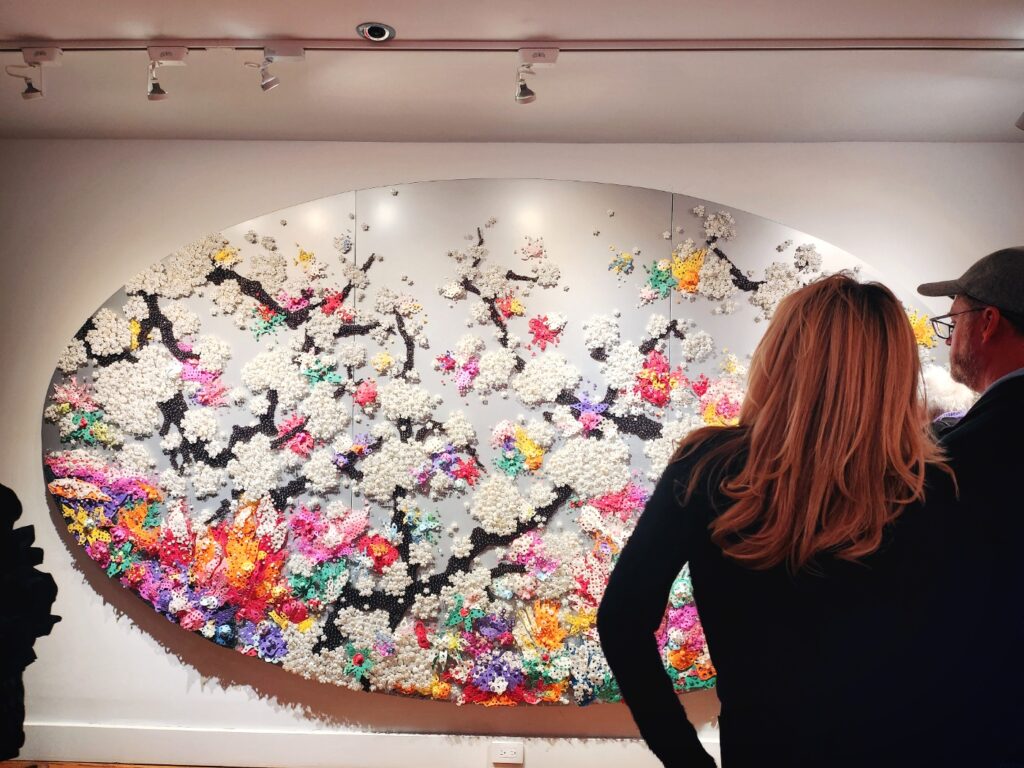
In contrast, Hwang’s installations tackle the metaphysical problem of impermanence, not only through ascetic minimalism but via an electrifying maximalism of regenerating form and vivacious colors. Flowers, cobwebs, branches and falling stars symbolize eternal change. Nature constantly regenerates new ephemeral forms that live until their eventual passing, repeating thus a never-ending cycle of generation, degeneration, regeneration. Firmly standing on middle ground between sensuous representation and Anzai’s negating abstraction, Hwang blithely confronts the irreversible flowing of time, not with an abstract rendering of the void, but with a poetic iconography of rejuvenating nature.
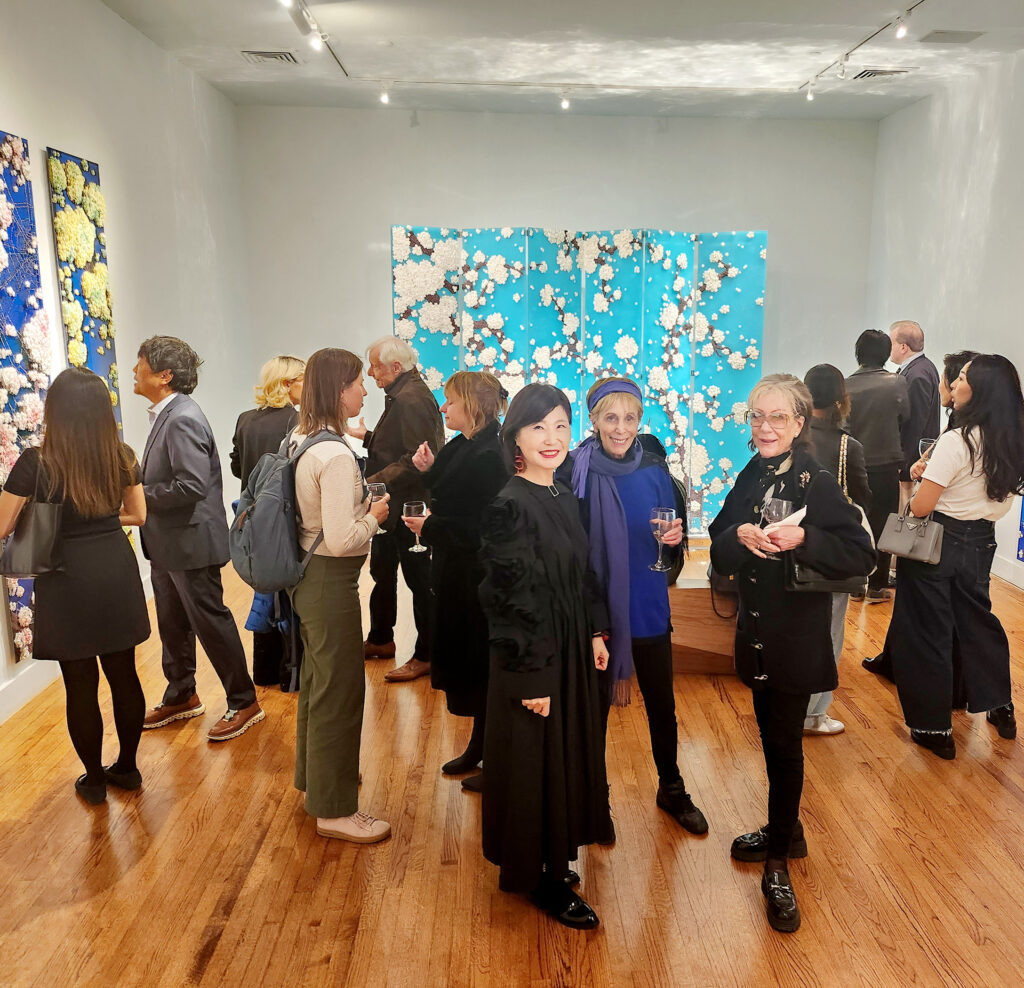
The Evanescence and Regeneration exhibition offers a riveting encounter with the experience of transience and rebirth. Hwang creates a material and spiritual dialectic, through her ethereal works in unconventional media, highlighting the beauty of fragility and the circularity of time. Her monumental floral imagery stabilizes a fugitive glimpse of incessant flux and temporality into biomorphic figures. But simultaneously, it transforms the vast openness of infinity into the frailest of phenomena, merely a blossom’s petal. In a way, Hwang successfully undertakes to poetically inject the eternal now of Pascal, into the brief temporality of the moment.
